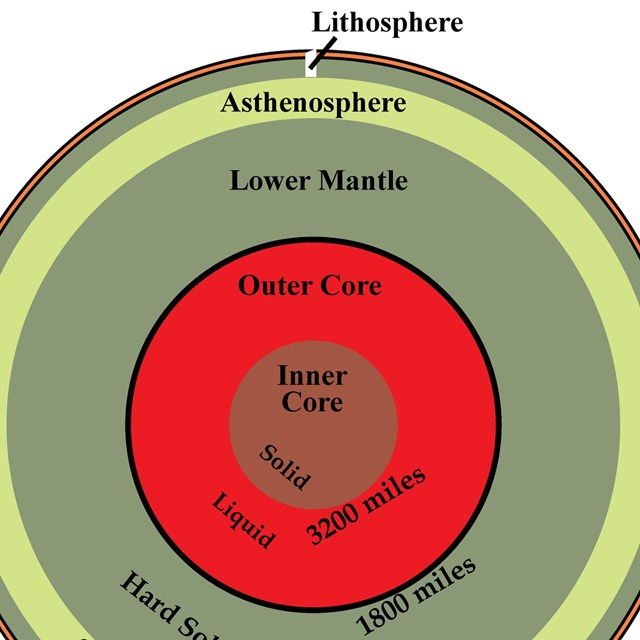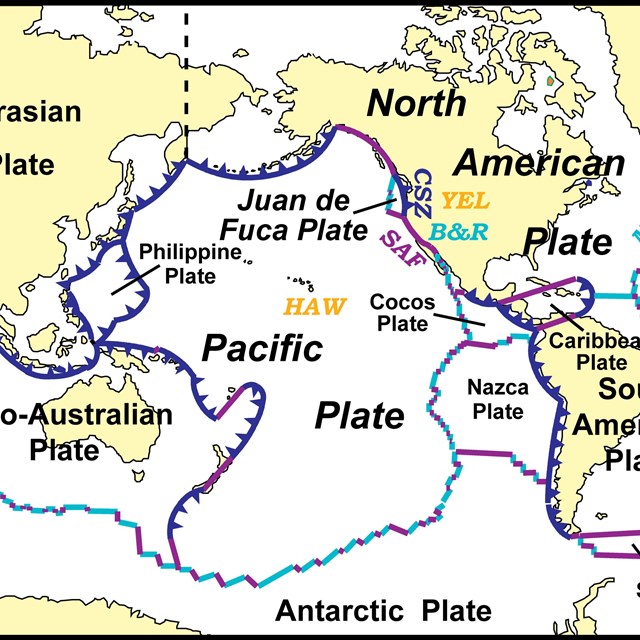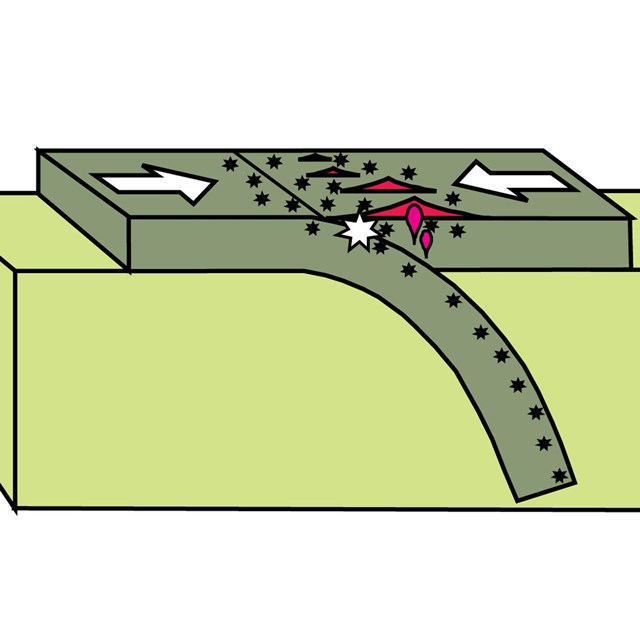
NPS photo by Dale Pate.
Earth's Layers
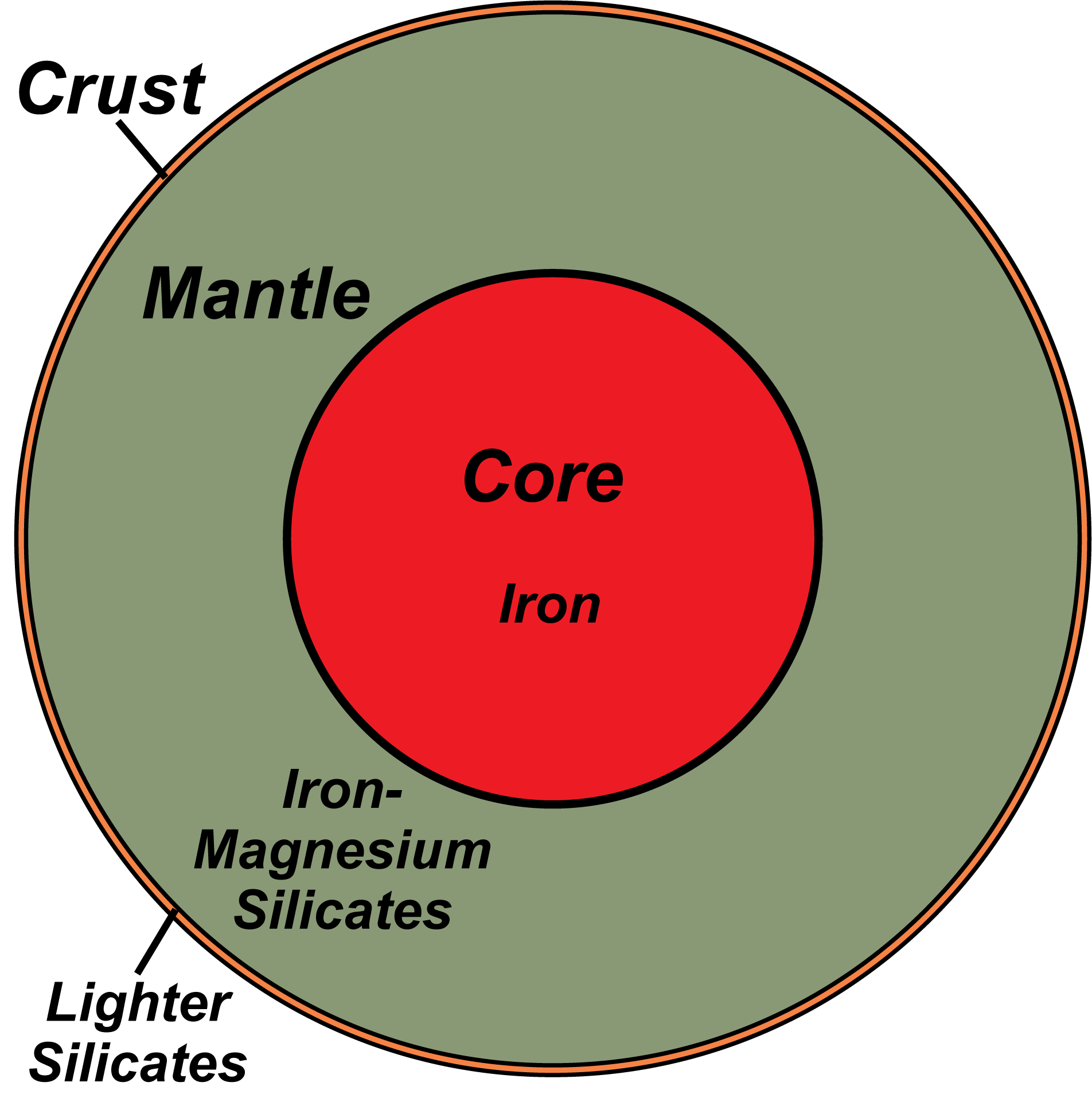
Modified from “Beauty from the Beast: Plate Tectonics and the Landscapes of the Pacific Northwest,” by Robert J. Lillie, Wells Creek Publishers, 92 pp., 2015, www.amazon.com/dp/1512211893.
Planet Earth is layered because it consists of different chemical materials. But that’s only part of the story. If you could descend to a great depth within the Earth, you would be incinerated by scorching temperature and crushed by enormous pressure. Those conditions harden and soften materials, and result in an outer shell of tectonic plates (lithosphere) that ride over a softer layer below (asthenosphere). Much of the action on Earth’s surface—earthquakes, volcanic eruptions, and the formation of mountain ranges—occurs along the boundaries of the moving plates, or where a plate moves over a hotspot rising from Earth’s deep interior.
Physical States of Earth's Layers
Earth's main layers (crust, mantle and core) are in different physical states due to increasing temperature and pressure with depth. The outer core is liquid because it’s so hot, but becomes a solid inner core because of the pressure. Earth's mantle (the zone between the thin crust and the heavy core) has hard and soft zones. The crust and outermost mantle are so cold they form the solid lithosphere. But the higher temperature just below that results in a somewhat softer layer, the asthenosphere. Still deeper in the mantle it’s even hotter, but pressure is so great that the lower mantle is a hard solid. These unique properties of Earth’s mantle create a situation where plates of hard lithosphere ride over the softer layer of asthenosphere.
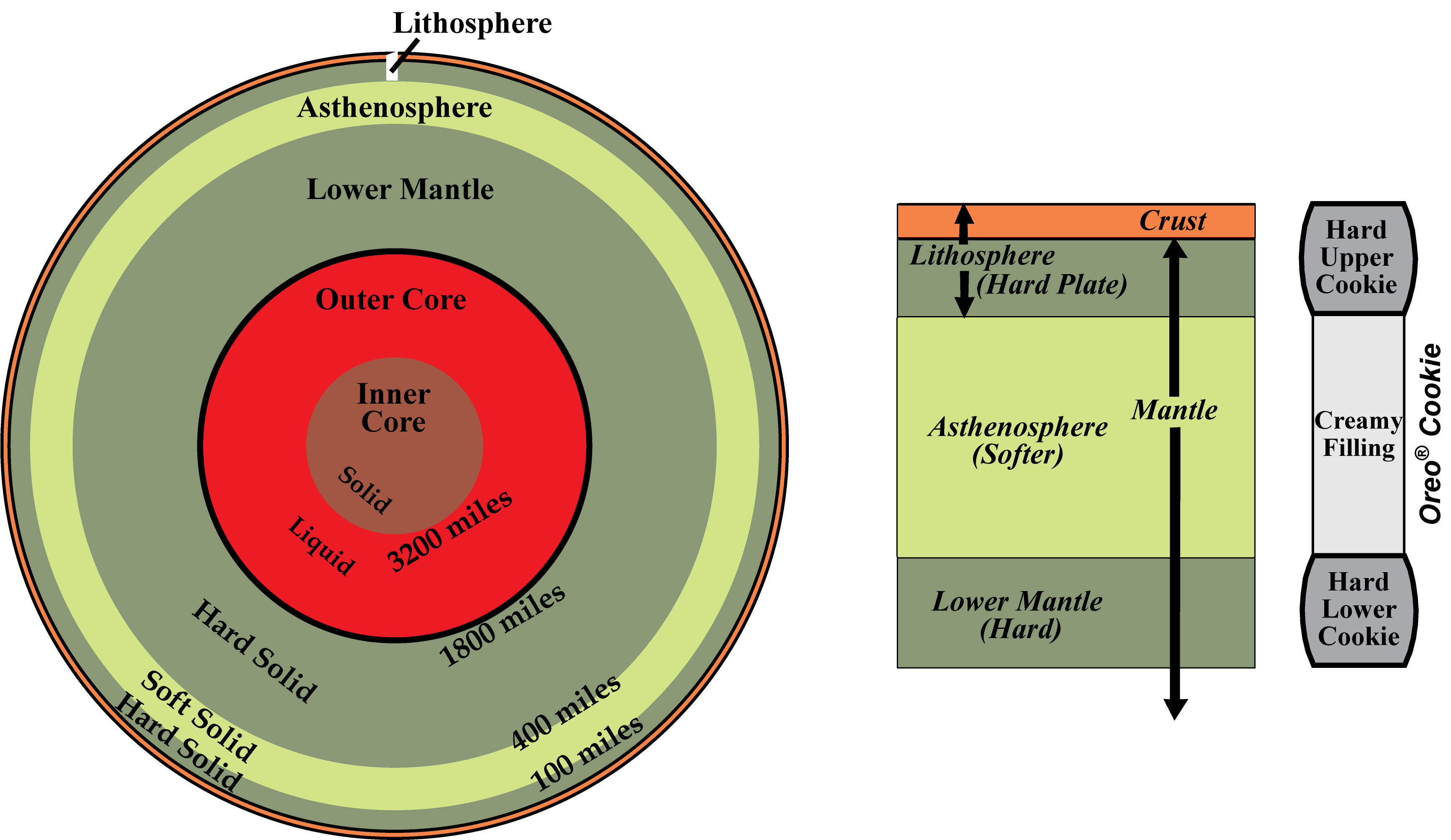
Modified from “Beauty from the Beast: Plate Tectonics and the Landscapes of the Pacific Northwest,” by Robert J. Lillie, Wells Creek Publishers, 92 pp., 2015, www.amazon.com/dp/1512211893.
Convection Currents
Planet Earth—Viewed as a Giant Heat Engine
Earth was originally molten and remains hot because radioactive elements decay to non-radioactive forms, generating heat in the process. One of the ways the heat escapes upward is through flow of the soft asthenosphere, an extremely slow version of the convection currents in a pot of boiling water or simmering pudding. The rigid plates of lithosphere ride about on the convecting asthenosphere, ripping apart at divergent plate boundaries, crashing together at convergent plate boundaries, and sliding past one another at transform plate boundaries.
Hotspots
Hotspots are plumes of hot material rising from deep within Earth’s mantle. As a hotspot encounters the bottom of a moving plate it melts its way through, forming a line of volcanoes, like the Hawaiian Islands, on the plate’s surface.
Geoscience Concepts—Plate Tectonics
Figures Used
Related Links
Site Index & Credits
Plate Tectonics and Our National Parks
- Plate Tectonics—The Unifying Theory of Geology
- Inner Earth Model
- Evidence of Plate Motions
- Types of Plate Boundaries
- Tectonic Settings of NPS Sites—Master List
Teaching Resources—Plate Tectonics
Photos and Multimedia—Plate Tectonics
Geological Monitoring—Plate Tectonics
Plate Tectonics and Our National Parks (2020)
-
Text and Illustrations by Robert J. Lillie, Emeritus Professor of Geosciences, Oregon State University [E-mail]
-
Produced under a Cooperative Agreement for earth science education between the National Park Service's Geologic Resources Division and the American Geosciences Institute.
Last updated: February 11, 2020

